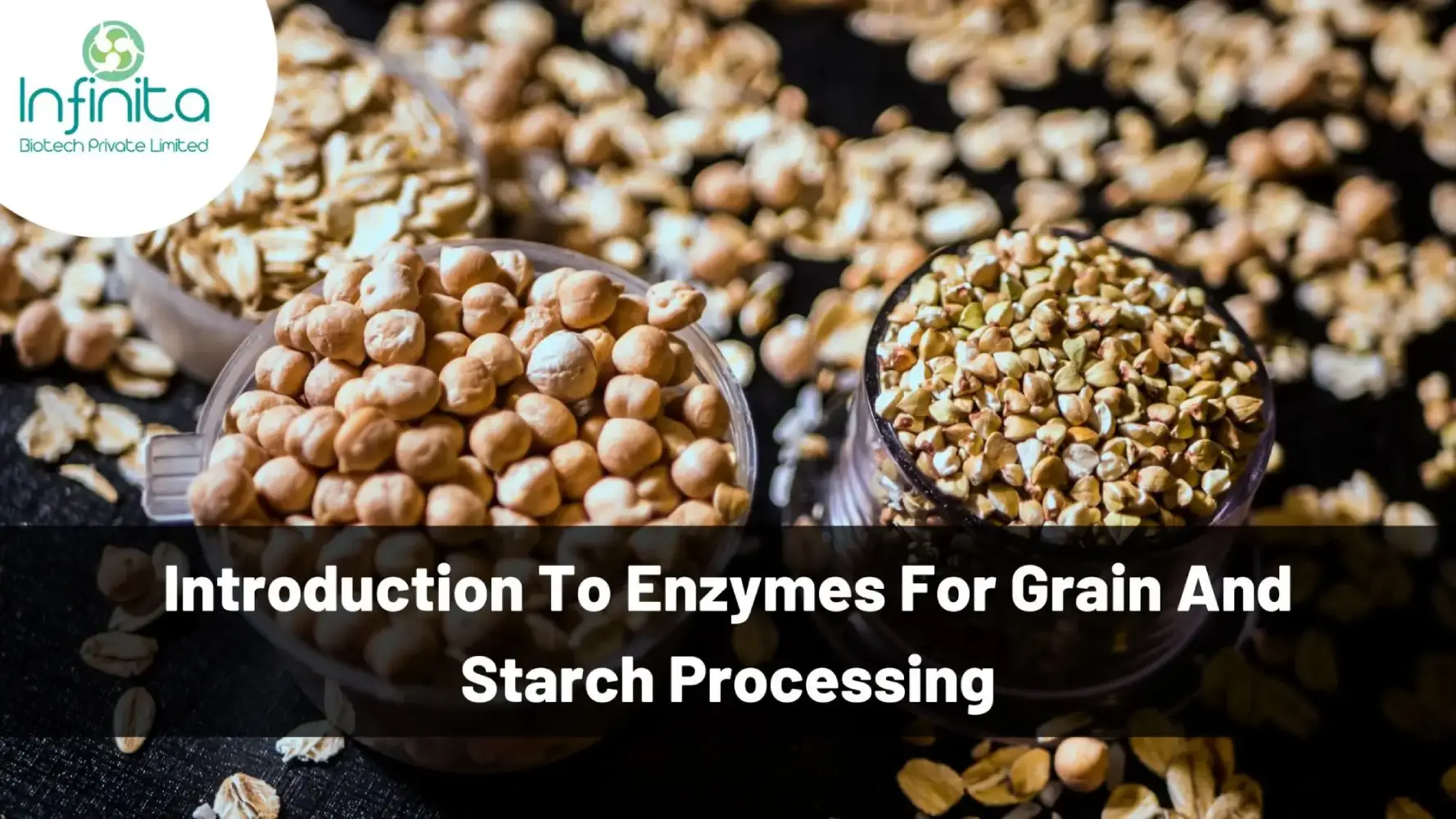Enzymes play a critical role in the grain and starch processing industry. They are biological catalysts that speed up chemical reactions and allow for the production of high-quality products with increased efficiency and lower costs. In this article, we will explore the different types of enzymes used in grain and starch processing, their role, benefits, limitations, and future potential.
Types of Enzymes Used in Grain and Starch Processing
Enzymes used in grain and starch processing can be divided into several categories, including alpha-amylases, beta-amylases, glucoamylases, xylanases, and proteases.
Alpha-Amylases
Alpha-amylases are used to break down complex carbohydrates into simpler sugars. They are used in the production of beer, maltodextrins, and high-fructose corn syrup.
Beta-Amylases
Beta-amylases are used to break down starch into glucose, which is an important source of energy for the human body. They are used in the production of glucose syrups and maltodextrins.
Glucoamylases
Glucoamylases are used to convert starch into glucose. They are commonly used in the production of high fructose corn syrup and other sweeteners.
Xylanases
Xylanases are used to break down xylan, which is a type of complex carbohydrate found in grain and other plant-based products. They are commonly used in the production of animal feed and ethanol.
Proteases
Proteases are used to break down proteins into smaller peptides and amino acids. They are commonly used in the production of animal feed and the clarification of fruit juices.
The Role of Enzymes in Grain and Starch Processing
Enzymes play an important role in the production of high-quality grain and starch-based products. They are used to break down starch, improve the quality of starch, and increase the efficiency of grain processing.
Breaking down Starch
Enzymes are used to break down starch into simpler sugars, which are easier to process and more readily available for use as energy. This process allows for the production of high-quality starch-based products with improved efficiency and lower costs.
Improving the Quality of Starch
By breaking down starch into simpler sugars, enzymes can improve the quality of starch-based products. This results in improved flavor, texture, and appearance, as well as increased shelf life and stability.
Improving the Efficiency of Grain Processing
Enzymes can also increase the efficiency of grain processing by breaking down complex carbohydrates and proteins, which makes it easier to extract and process the desired components. This leads to increased yields and lower production costs.
The Benefits of Using Enzymes in Grain and Starch Processing
The use of enzymes in grain and starch processing provides several benefits, including increased yield, improved quality of products, lower production costs, and increased profitability.
Increased Yield
By breaking down complex carbohydrates and proteins, enzymes can increase the yield of grain and starch-based products. This results in more products being produced with the same amount of raw materials, leading to increased profits and lower costs.
Improved Quality of Products
The use of enzymes in grain and starch processing can improve the quality of products by breaking down starch into simpler sugars, which results in improved flavor, texture, and appearance.
Lower Production Costs
Enzymes can reduce production costs by increasing the efficiency of grain processing. By breaking down complex carbohydrates and proteins, enzymes make it easier to extract and process the desired components, resulting in higher yields and lower costs.
Increased Profitability
The use of enzymes in grain and starch processing can lead to increased profitability by improving the efficiency of grain processing, increasing the yield of products, and improving the quality of products.
The Limitations of Using Enzymes in Grain and Starch Processing
Despite the many benefits of using enzymes in grain and starch processing, there are also some limitations to consider. These include limited shelf life, cost of enzymes, and compatibility with certain ingredients.
Limited Shelf Life
Enzymes have a limited shelf life and must be stored and handled properly to maintain their efficacy. This can increase the cost of using enzymes in grain and starch processing.
Cost of Enzymes
Enzymes can be expensive, and the cost of using enzymes in grain and starch processing can be a barrier for some companies.
Incompatibility with Certain Ingredients
Enzymes can be incompatible with certain ingredients, which can limit their use in certain applications.
The Future of Enzymes in Grain and Starch Processing
The future of enzymes in grain and starch processing is bright, with advancements in enzyme technology and an increasing demand for enzymes.
Advancements in Enzyme Technology
The development of new and more advanced enzymes is a key area of research in the grain and starch processing industry. New enzymes with improved performance, stability, and cost-effectiveness are being developed, which will increase the efficiency of grain and starch processing.
Increased Demand for Enzymes
As the demand for high-quality, sustainable, and cost-effective grain and starch-based products continues to grow, the demand for enzymes in grain and starch processing will also increase.
The Potential for New Applications
There is also potential for the development of new applications for enzymes in grain and starch processing, including new uses for existing enzymes and the development of new types of enzymes for specific applications.
Choosing the Right Enzymes for Grain and Starch Processing
Choosing the right enzymes for grain and starch processing is important for achieving the desired outcomes. When choosing enzymes, several factors should be considered, including the type of grains and starches being processed, the specific process, and the desired outcome.
Factors to Consider
When choosing enzymes for grain and starch processing, several factors should be considered, including the type of grains and starches being processed, the specific process, and the desired outcome.
Types of Grains and Starches
The type of grains and starches being processed will determine the type of enzymes that are required. Different enzymes are designed to work best with specific types of grains and starches.
The Specific Process
The specific process being used will also determine the type of enzymes that are required. Different processes will require different types of enzymes to achieve the desired outcome.
The Desired Outcome
The desired outcome will also influence the choice of enzymes for grain and starch processing. The desired outcome will determine the type of enzymes that are required to achieve the desired results.
The Importance of Proper Storage and Handling of Enzymes
Proper storage and handling of enzymes are important for maintaining their efficacy and ensuring that they work as intended. Proper storage conditions and handling procedures should be followed to ensure that the enzymes are stored and handled properly.
Proper Storage Conditions
Enzymes should be stored in a cool, dry place with a stable temperature to ensure that they remain effective. They should be protected from light, moisture, and extreme temperatures.
Proper Handling Procedures
Proper handling procedures should be followed to ensure that the enzymes are handled properly. This includes following the manufacturer’s instructions and wearing protective clothing and equipment when handling the enzymes.
The Impact of Enzymes on the Environment
The use of enzymes in grain and starch processing can have both positive and negative impacts on the environment.
The Environmental Benefits of Using Enzymes
Enzymes can have a positive impact on the environment by reducing the amount of waste generated during grain and starch processing. They can also reduce the energy required for processing, leading to lower greenhouse gas emissions.
The Potential Environmental Risks
However, there is also a risk that enzymes could have negative impacts on the environment, such as the release of harmful substances into the environment. This risk can be mitigated by following proper storage and handling procedures and ensuring that the enzymes are used responsibly.
The Future of Grain and Starch Processing with Enzymes
The future of grain and starch processing with enzymes is bright, with an increasing demand for high-quality, sustainable, and cost-effective grain and starch-based products. The development of new and more advanced enzymes will continue to improve the efficiency and cost-effectiveness of grain and starch processing, leading to increased profitability and a more sustainable industry.
The Increasing Demand for Enzymes
As the demand for high-quality, sustainable, and cost-effective grain and starch-based products continues to grow, the demand for enzymes in grain and starch processing will also increase. This will lead to increased investment in the development of new and more advanced enzymes.
The Potential for New Applications
There is also potential for the development of new applications for enzymes in grain and starch processing, including new uses for existing enzymes and the development of new types of enzymes for specific applications.
The Future of Enzyme Technology
The future of enzyme technology is also promising, with ongoing research and development aimed at improving the performance, stability, and cost-effectiveness of enzymes. This will lead to even more efficient and sustainable grain and starch processing in the future.
Conclusion
Enzymes play a critical role in the grain and starch processing industry, providing many benefits, including increased yield, improved quality of products, lower production costs, and increased profitability. Despite some limitations, such as limited shelf life and cost, the future of enzymes in grain and starch processing is bright, with an increasing demand for high-quality, sustainable, and cost-effective grain and starch-based products.

